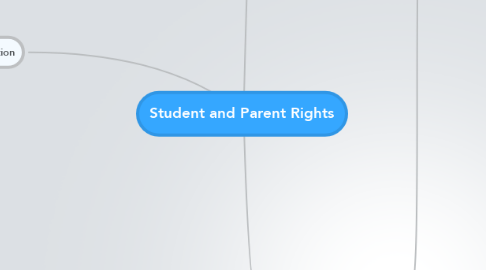
1. Effective Education
1.1. Overall Educational Context
1.1.1. Focus on achievement in social and physical school environments
1.1.2. Individualized care and attention
1.1.3. Support and training for parents
1.1.4. Consistency of consequences and attention at home and school
1.2. Curriculum and instructional objectives
1.2.1. Empirically valid; measurable performance criteria; promote long-term cumulative mastery
1.2.2. Criteria includes accuracy and speed of fluent performance
1.2.3. Includes long and short term goals, both personal and vocational
1.2.4. Explicitly measure long term retention and maintenance through objectives
1.3. Assessment and Student Placement
1.3.1. Criterion-referenced on actual achievement levels
1.3.2. Placement determined by entry level skills
1.4. Instructional Methods
1.4.1. Allow mastery at individual pace
1.4.2. Sufficient opportunities for practice
1.4.3. Individually designed consequences focusing on error correction and increased frequency of response
1.4.4. Utilize individualized instruction where appropriate
1.4.5. Use most current and valid resources available
1.4.6. Highly qualified teachers
1.5. Measurement and Summative Evaluation
1.5.1. Objective curriculum-based measures of performance
1.5.2. Objectively measured individual achievement
1.6. Responsibility for Success
1.6.1. Objective measures of student achievement determine financial and operational consequences
1.6.2. Strive for student achievement; responsibility of faculty and staff
1.6.3. Families allowed/encouraged to change schools or programs until needs are met
2. Effective Behavioral Treatment
2.1. Appropriate therapeutic physical and social environment based on individual needs
2.2. Personal welfare is focal point of services
2.3. Highly qualified and competent behavior analyst provides individualized treatment
2.4. Programs seek to teach functional skills to promote independence
2.5. Regular behavior assessment and ongoing evaluation to determine and in response to treatment
2.6. Effective and scientifically valid individualized treatment
3. Restraint and Seclusion
3.1. Guiding Principles
3.1.1. Welfare of the individual is the highest priority
3.1.1.1. Professional judgement of duly formed treatment team, including individual served and legal guardians
3.1.2. Right to choose
3.1.2.1. Ultimate choice is left to individual and/or legal guardians regarding treatment without undue pressure for organizations or institutions
3.1.3. Least Restrictiveness
3.1.3.1. Similar to least restrictive environment, treatment options must reflect the principle of least restrictiveness
3.2. Application
3.2.1. General Definitions
3.2.1.1. Restraint: involves physical intervention; can be protective, therapeutic, or both
3.2.1.2. Seclusion: isolation from peers to reduce risk of harm to self or others; can be protective, therapeutic, or both
3.2.1.3. Time-Out: reduced or limited access to reinforcement; maybe removal from or changes to existing environment
3.2.2. Restraint in BIP
3.2.2.1. Reduces future probability of target behavior or reduces episodic severity of target behavior
3.2.2.2. Procedures should be developed and monitored by a Board Certified Behavior Analyst or similarly trained, experienced and licensed professional
3.2.3. Time-Out in BIP
3.2.3.1. Designed to decrease future probability of a target behavior or reduce episodic severity of target behavior
3.2.3.2. BIP with Time-Out intervention must: derive from behavioral assessment, incorporate reinforcement strategies for appropriate behavior, designate a brief duration, utilize evaluation by objective outcome data, and maintain consistency with scientific literature and current best practices
3.2.4. Necessity for Emergency Restraint and Seclusion
3.2.4.1. Emergency = imminent risk of harm, unpredictable occurrence, not amenable to less restrictive interventions, when less intrusive interventions have failed or are determined insufficient based on empirical documentation
3.2.4.2. Crisis management - implemented following a well-defined, predetermined criteria, use of de-escalation techniques, applied at minimum level of physical restraint necessary for safety, abide by precise and mandatory release criteria
3.2.4.3. Limited to procedures within a standardized program and with medical professional approval of safety
3.2.4.4. Consideration of risks and benefits
3.2.4.5. Not a replacement for behavioral treatment!
3.2.4.6. Should not be used routinely
3.2.4.7. When necessary, repeated use should be included in a written behavior plan and reviewed by a Peer Review Committee and a Human Rights Committee with consent of individual and legal guardians
3.2.5. Informed Consent
3.2.5.1. Individual and legal guardians are allowed to participate in the development of the behavior plan
3.2.5.2. Restraint and seclusion interventions must receive full consent of those responsible for decision making
3.2.5.3. Individual and legal guardians must be informed of methods, risks, and effects of interventions, including the option to refuse the use of restraint
